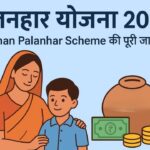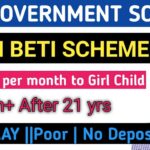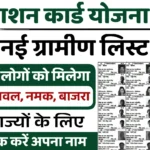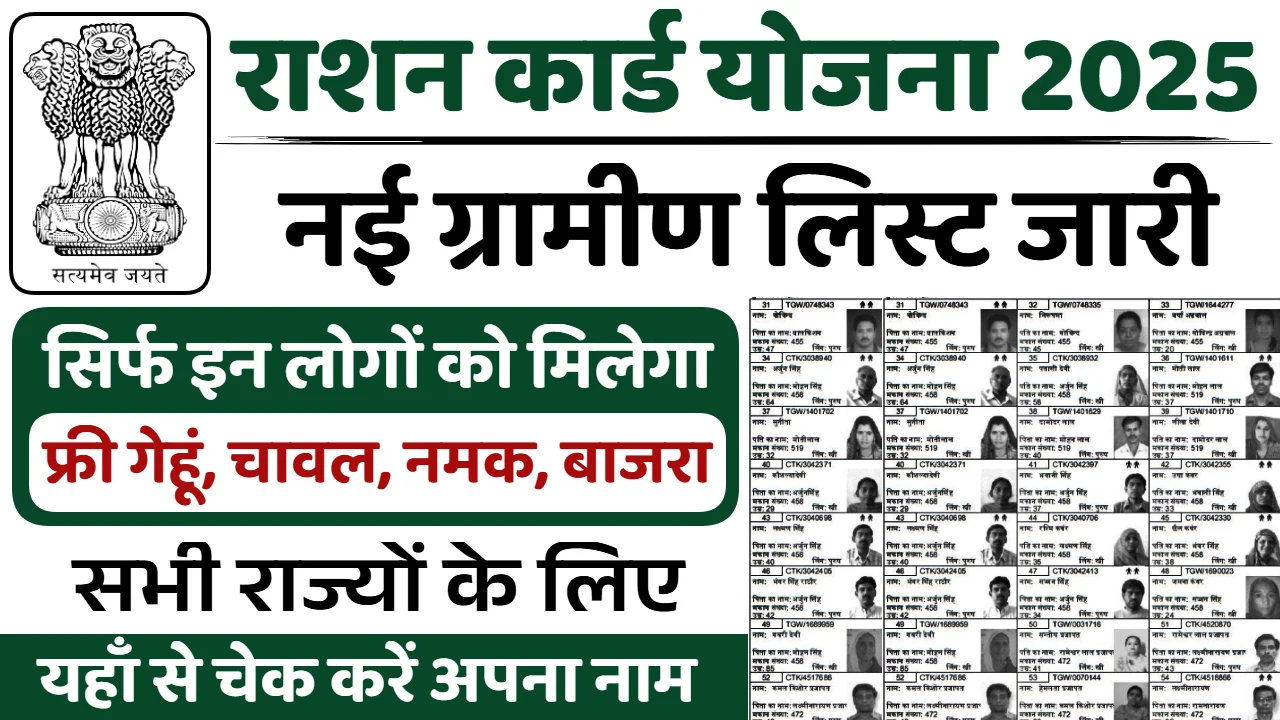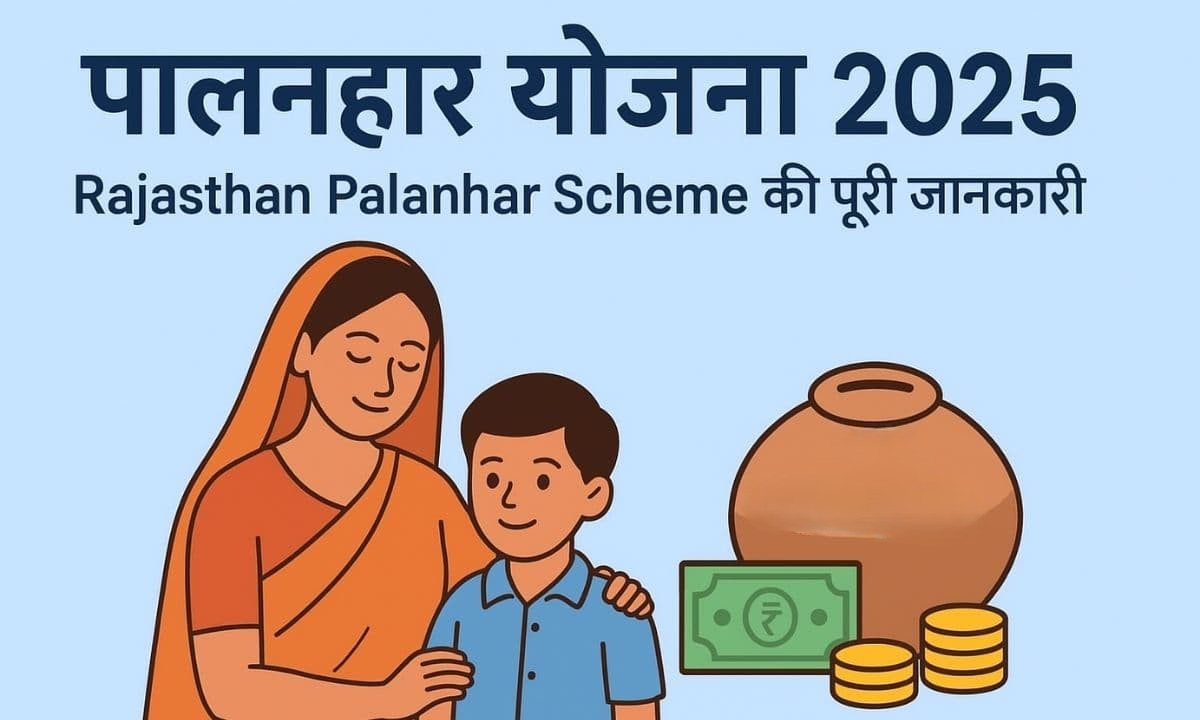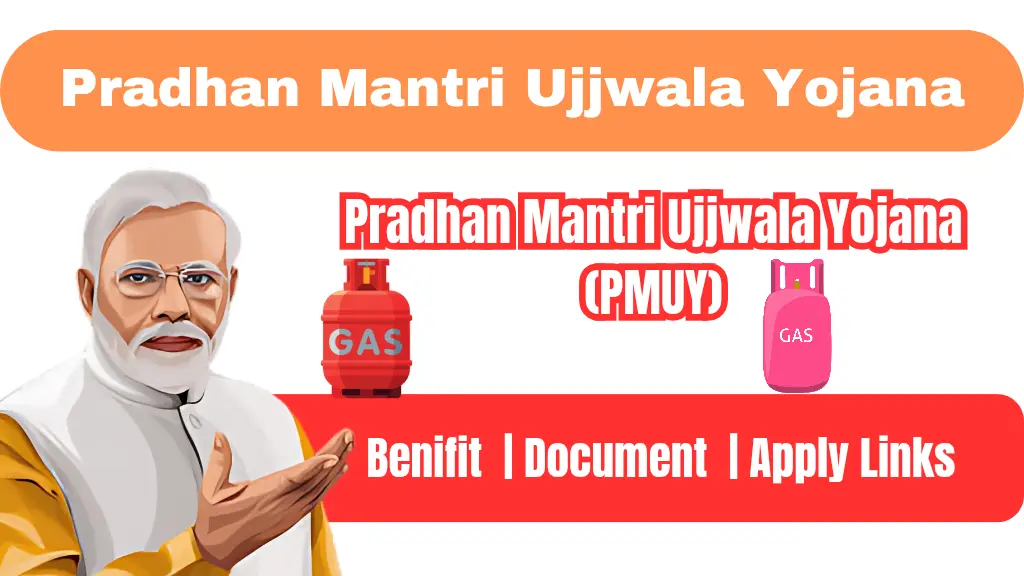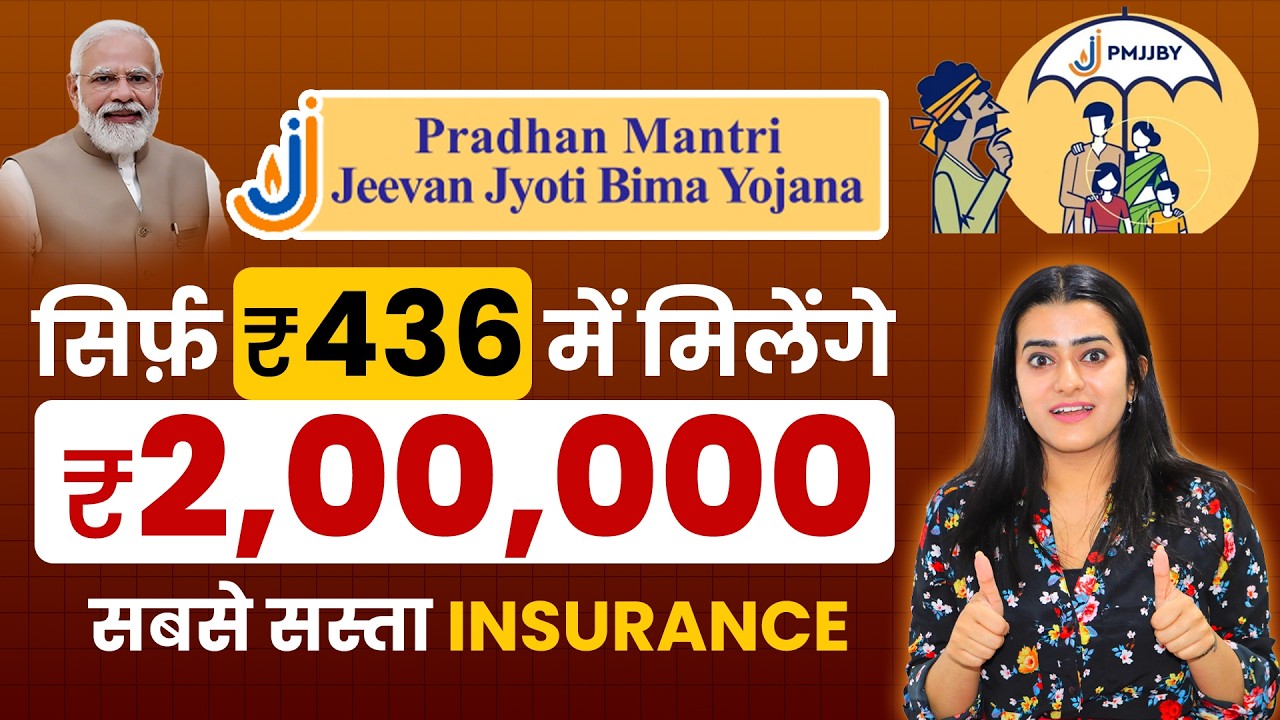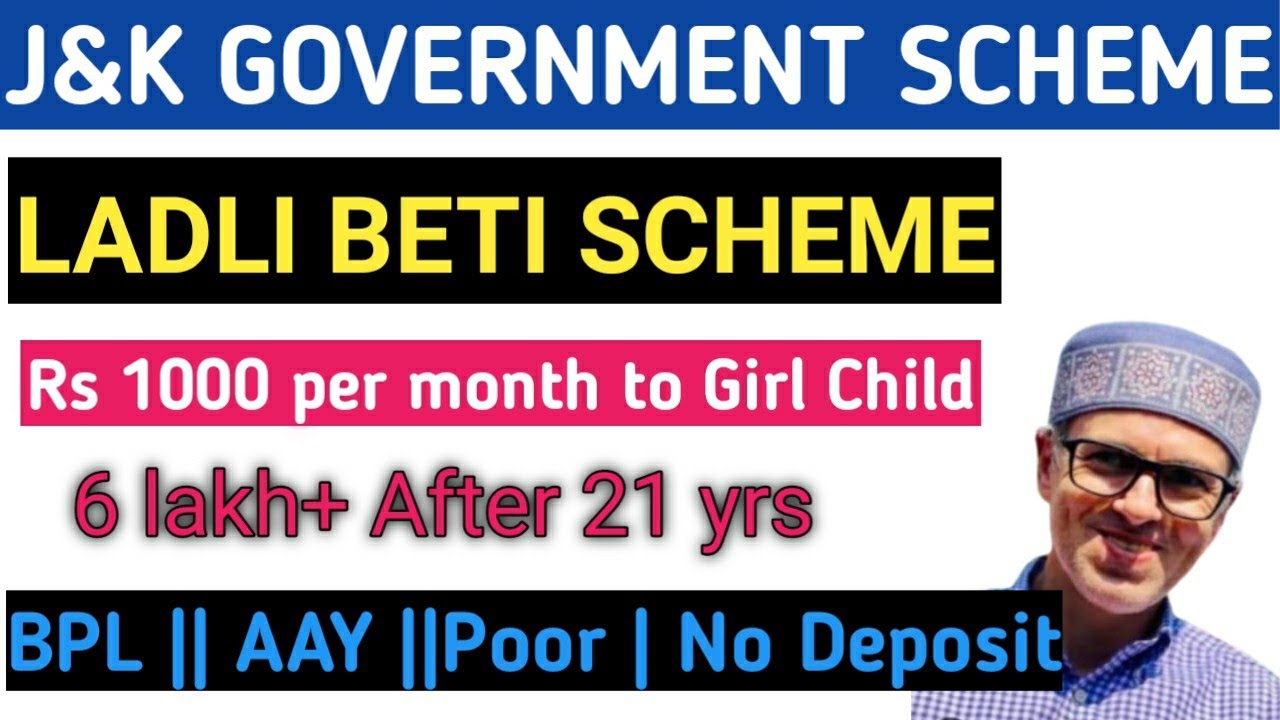The government has released the Ration Card Rural List 2025, bringing a wave of relief and hope to millions of rural families across the country. Under this new update, only those citizens whose names appear on the list will be eligible to receive free food grains such as wheat, rice, salt, and millet under the National Food Security Act (NFSA).
If you live in a rural area and have applied for a ration card, it is essential to check whether your name has been included in the newly issued list. This step ensures that every eligible citizen gets access to subsidized or free ration from the government.
What is the Ration Card Rural List?
The Ration Card Rural List is an official record maintained by the Ministry of Food and Public Distribution, Government of India. It contains the names of rural households who qualify for ration cards based on their income and economic background.
Citizens whose names are included in this list are entitled to receive ration items such as rice, wheat, salt, sugar, and millet either at subsidized rates or completely free under government food security schemes.
The purpose of releasing the updated rural ration list is to ensure transparency and fairness, allowing citizens to verify their inclusion and benefit from food assistance without middlemen or corruption.
Objective of the Ration Card Rural Scheme
The main goal of the Ration Card Rural Scheme is to provide food security to poor and economically weaker families living in rural regions.
India is still home to millions of families who struggle to afford daily meals. Through this scheme, the government ensures that no family sleeps hungry and that every citizen has access to basic nutrition.
The scheme especially focuses on:
- Supporting families dependent on agriculture, daily labor, or irregular income sources.
- Ensuring nutritious and sufficient food for every household in rural areas.
- Promoting economic stability and self-reliance by reducing household food expenses.
Types of Ration Cards Issued in Rural Areas
The government issues different types of ration cards based on the financial condition and income level of a family.
Here are the main categories:
- APL (Above Poverty Line)
- For families whose income is above the poverty line.
- These families can purchase ration items at subsidized prices.
- BPL (Below Poverty Line)
- For families living below the poverty line.
- They receive ration items at much lower rates or sometimes for free.
- AAY (Antyodaya Anna Yojana)
- This card is issued to the poorest of the poor families.
- They receive maximum benefits including free grains and essential items from government depots.
Benefits of the Rural Ration Card Scheme
The Ration Card Scheme provides several benefits to eligible citizens, particularly in rural India where unemployment and low income are common.
Here are the key advantages:
- Free or subsidized food grains such as wheat, rice, sugar, and millet.
- Eligibility for multiple government welfare schemes, including LPG subsidy, PM Awas Yojana, PM Kisan Yojana, and pension schemes.
- Serves as an official document for address and identity proof.
- Helps poor families save money spent on daily food needs.
- Strengthens the Public Distribution System (PDS) by ensuring the right food reaches the right people.
Eligibility Criteria for Rural Ration Card 2025
If you wish to apply for or check your name in the Rural Ration Card List 2025, you must fulfill the following eligibility requirements:
- The applicant must be a permanent resident of a rural area in India.
- The applicant should be 18 years or older.
- The applicant or any family member should not be an income tax payer.
- The applicant should not be employed in any senior or government post.
- The applicant must not receive a pension from any central or state government scheme.
- Families primarily dependent on agriculture, labor work, or small self-employment are given priority.
Required Documents for Applying Under the Scheme
To obtain a ration card or verify your inclusion in the rural list, you need to provide certain documents during registration. These help the department verify your identity and eligibility.
List of Required Documents:
- Aadhaar Card of the applicant and family members
- Voter ID Card
- Income Certificate issued by competent authority
- Residence Certificate / Proof of Address
- Age Certificate or Birth Certificate
- Passport-size photographs of the head of the family
- Active Mobile Number
Once all documents are submitted and verified, your application is processed, and your name is added to the Ration Card Rural List 2025 if you meet the eligibility criteria.
How to Check the Ration Card Rural List Online
The government has made the process of checking your name in the Ration Card Rural List 2025 very simple and transparent. You can verify your eligibility and download the list online without visiting any office physically.
Follow the steps below:
- Visit the official website of the Food and Public Distribution Department.
- On the homepage, select your state or union territory.
- You’ll be redirected to your state’s Food and Civil Supplies Department portal.
- Click on the Ration Card option.
- Select your district, block, and village.
- The Rural Ration Card List 2025 will appear on your screen.
- Search for your name or ration card number in the list.
If your name appears on the list, congratulations — you are eligible to receive ration benefits from your local Fair Price Shop (FPS) or government depot.
Offline Process to Check the Rural Ration List
For citizens who do not have access to the internet or smartphones, the list can also be checked offline.
Here’s how:
- Visit your nearest Fair Price Shop (FPS) or Panchayat Office.
- Ask the officer in charge to show the latest rural ration card list.
- Check your name and ration card details manually.
The government ensures that all Panchayat offices and ration depots display the updated beneficiary list to maintain transparency.
Why is it Important to Check the List?
Many applicants assume that once they apply, their names are automatically added to the list. However, that’s not always the case. Errors in data entry, document verification issues, or incomplete applications may lead to exclusion from the list.
By checking the Ration Card Rural List 2025, you can:
- Confirm your eligibility.
- Ensure you don’t miss out on free ration distribution.
- Raise a complaint or reapply in case your name is missing.
This simple step can help safeguard your right to government food security benefits.
How to Reapply If Your Name Is Missing
If your name does not appear in the rural ration card list, don’t worry — you can still apply again.
Here’s what to do:
- Visit your nearest Food and Supplies Office or the official online portal of your state.
- Fill out the new ration card application form.
- Attach all required documents (Aadhaar, income proof, residence certificate, etc.).
- Submit the form either online or in person.
- After verification, your name will be added to the next updated list.
It’s recommended to keep a photocopy of your application form and acknowledgment number for future reference.
How the Rural Ration Scheme Supports the Poor
The Rural Ration Card Scheme is not just about providing food — it is about ensuring dignity, equality, and basic human rights for every citizen.
For millions of daily wage earners, farmers, and small vendors, ration cards act as lifelines. During natural calamities, price inflation, or unemployment, this scheme ensures that no one is left hungry.
The Public Distribution System (PDS) plays a crucial role here by distributing food grains through authorized ration shops across villages. The system has been modernized in recent years with digital ration cards, biometric verification, and e-PoS machines to prevent fraud and duplicate entries.
Digital Ration Cards and Transparency
In line with the government’s Digital India initiative, the ration card system is gradually shifting to an online model. Citizens can now:
- Apply for a ration card online.
- Check eligibility and beneficiary lists.
- Track ration distribution using mobile apps.
- Report grievances online.
This not only saves time but also reduces corruption by making every transaction digitally traceable.
Important Information for Rural Beneficiaries
- Each eligible household receives 5 kg of food grains per person per month under the NFSA.
- AAY (Antyodaya) households receive 35 kg of food grains per month.
- Food grains are distributed at highly subsidized rates — ₹2 per kg for wheat and ₹3 per kg for rice (rates may vary by state).
- Free distribution may also apply under special government programs like PM Garib Kalyan Anna Yojana (PMGKAY).
Beneficiaries are advised to regularly visit the official portal or their village ration office to stay updated on new announcements and benefits.
